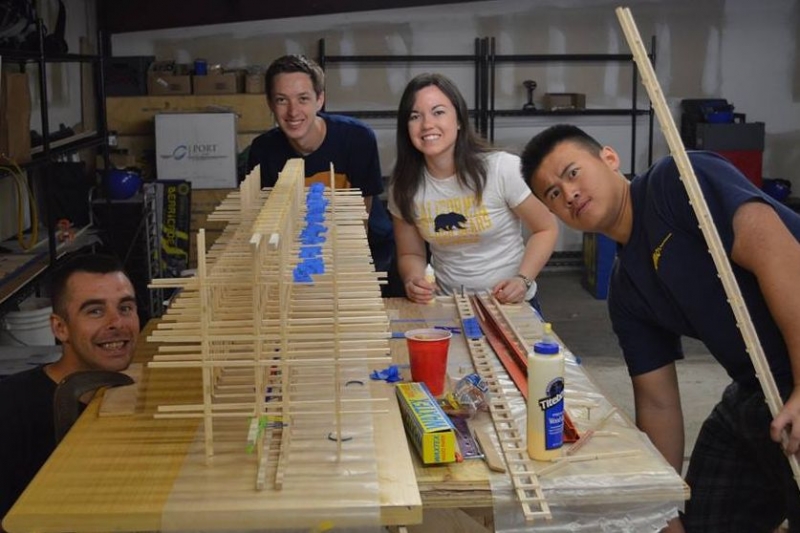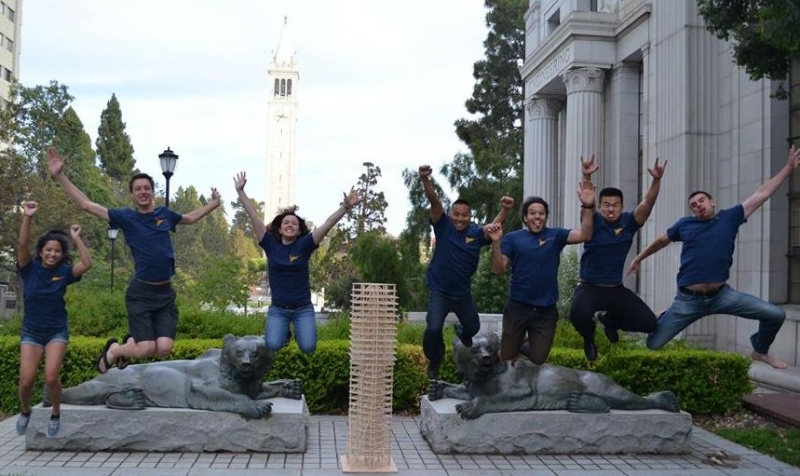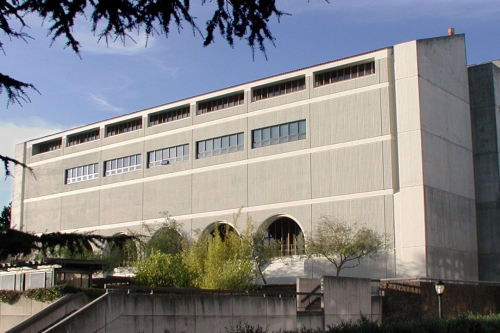Three earthquakes were nothing to Aureous One. Bring it, shake table.
Aureous One, the 5-ft tall, 29-story balsa-wood structure and darling of the CEE Seismic Team, stood proud upon being subjected to 3 simulated earthquakes at the Earthquake Engineering Research Institute’s (EERI) Undergraduate Seismic Design Competition in Anchorage, Alaska. Berkeley placed second among 28 teams from around the world.
The Seismic Team had 25 contributing members. Nine students attended the competition on July 22-25
Each structure is made to withstand 3 ground motion simulations on the shake table, the 1940 El Centro earthquake, the 1994 Northridge earthquake, and a synthetic ground motion that is not a scaled version of a real earthquake.
The goal is to remain standing. Aureous One did.
It is rare for structures to survive all 3 quakes. This year, however, 14 out of 28 structures survived. Besides resilience to earthquakes, judges scored on building economics, architecture, performance predictions, and the team poster and presentation. Aureous One emerged as the second most profitable out of all 28 structures.
See video:
Building the model
Aureous One benefited from continual input from all team members, from concept to construction.
"Ultimately, the design that went to competition was a product of different minds, all meeting the challenges presented in the design and construction criteria," said James Acevedo, team co-captain.
The team chose a design that would behave in a relatively stiff manner in the event of seismic loading, as a stiff design would make is easier to predict its performance. Still, prediction proved elusive.
"We tested our structure twice at Berkeley, and it failed spectacularly both times. So we had no idea what would happen in competition," said Mara Minner, team co-captain.

Professor Filip Filippou is Seismic's faculty advisor. He provided technical expertise in structural design and analysis—and a lot of encouragement.
Charlotte Wong, a CEE alumna who now works at Dekenkolb, also contributed technical advice.
Numerous donors came forward to help the team, many of whom were CEE alumni. The team was also supported by the Carl W. Johnson Student Leadership Fund.
Most rewarding moment
"Seeing our structure survive all 3 ground motions! That was our stretch goal going into the competition," said Minner.
Although the team worked on Aureous One throughout the school year, the final product was built in June and July. A core group were in the basement of O'Brien Hall Monday-Saturday—a huge time commitment on top of summer internships, research, and classes.
"We all agree though, it was completely worth it," said Minner.
Funny now, but then...not so much
On the day they finished construction after countless hours of work, the team decided to take a group photo with the structure before shipping it off to Alaska. Someone had the idea of taking a jumping picture. While all were exclaiming over what an exceptional jumping picture it was, a gust of wind blew, and Aureous One faceplanted.
"We all watched it fall in slow motion and then heard the thud on the concrete," said Minner, "We looked at each other. That did not just happen."
Luckily no wood broke, only some joints became unglued. In retrospect, it did not have much effect on the structure's performance. And the team reasoned that maybe the joints needed more glue on them in the first place.
"Unlikely that the impact was good for it though," said Minner.

The great jumping pic 5 seconds before faceplant.
Legacy for next year's team
To ensure a continuity of success, the team elected younger students to officer positions. They also documented aspects of the design and construction.
"Most importantly, we set the bar for next year's team to beat," said Acevedo.
Go Bears!

